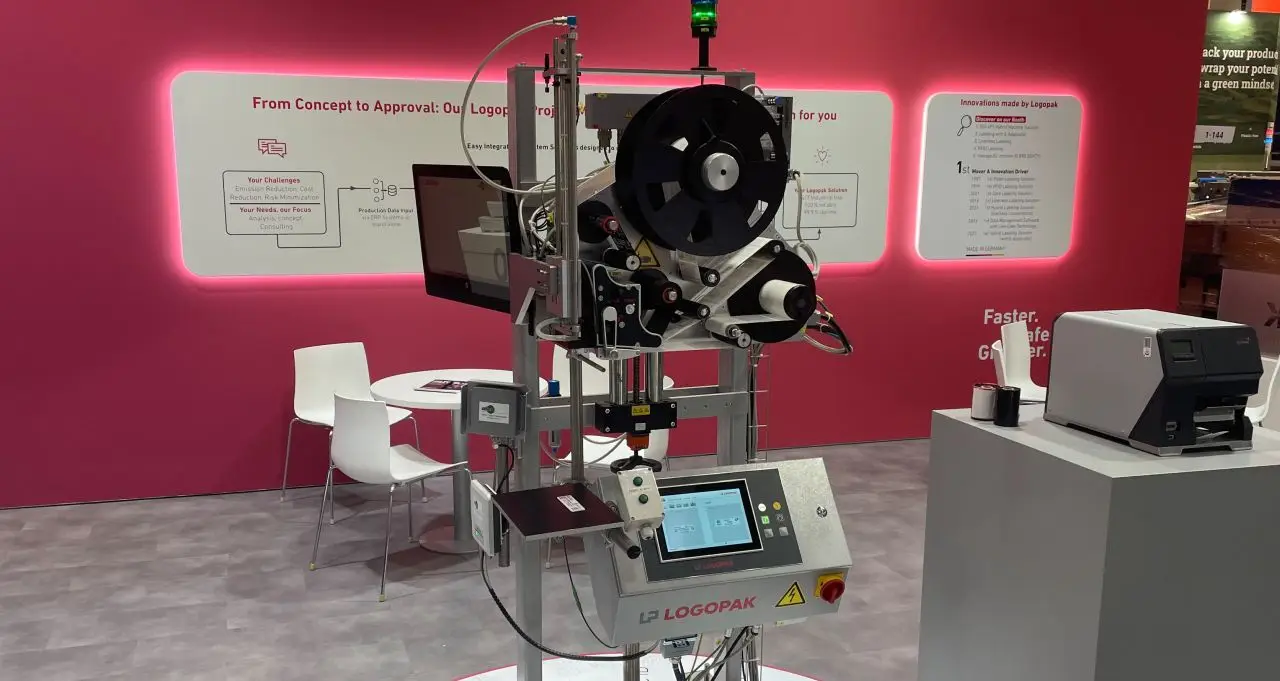The increase in antibiotic-resistant superbugs is leading to a global health crisis. Forecasts predict that infection rates will fall to pre-penicillin levels by 2028, costing billions.
The solution? Earlier and more precise detection of resistant pathogens. This is precisely where Empa comes in with its sensor-based technologies - for faster diagnosis, more targeted therapies and effective protection against the further spread of the "silent pandemic".
This article, based on a press release by Andrea Six (Empa - Swiss Federal Laboratories for Materials Science and Technology ), provides an insight into pioneering sensor research into resistant pathogens.
Resistant pathogens are one of the biggest threats to our health - causing five million deaths worldwide every year. Antimicrobial resistance (AMR) has long since become a silent pandemic that not only costs lives, but also puts the global healthcare system under pressure. More and more infections can no longer be treated with conventional antibiotics - with fatal consequences.
However, biosensor diagnostics offer a beacon of hope. Researchers at the Swiss Federal Laboratories for Materials Science and Technology (Empa) have developed innovative biosensor diagnostics capable of rapidly identifying dangerous pathogens. These advancements aim to facilitate quicker responses, more targeted treatments, and ultimately, save lives.
What is AMR and why does it affect us all?
AMR stands for antimicrobial resistance. It refers to the ability of microorganisms – including bacteria, viruses, fungi, and parasites – to evolve and become resistant to drugs that were once effective against them. In practical terms, this means that antibiotics, antivirals, and antifungals may lose their effectiveness.
According to the World Health Organization (WHO), antibiotic resistance is one of the top 10 global health threats. It's spreading quietly but steadily, often going unnoticed until standard treatments suddenly fail.
This growing issue is often called the "silent pandemic" – because by the time it’s visible, it may already be too late for some patients.
But how does AMR develop in the first place?
Bacteria, viruses, fungi, and parasites adapt over time – and can become resistant to medication. This process is drastically accelerated by the overuse and misuse of antibiotics, such as when they're taken for viral infections, where they have no effect.
But it's not just about medication: Poor hygiene, lack of infection prevention, and limited access to clean water also contribute significantly to the spread of resistance.
The consequences?
Infections last longer, become more severe, and are harder to treat.
Hospital stays are prolonged, treatments become more expensive.
Even routine procedures – like surgeries or cancer therapies – carry greater risk.
What used to be easily treatable can now become life-threatening.
Alarming reality: how far antimicrobial resistance has progressed
Antimicrobial resistance is rising rapidly around the world – especially in common infections like urinary tract infections, diarrhea, sepsis, and sexually transmitted diseases. But the medical arsenal is weakening: more and more bacteria no longer respond to standard antibiotics.
A striking example is ciprofloxacin, a widely used antibiotic for urinary tract infections. According to the World Health Organization (WHO), resistance rates for Escherichia coli range from 8.4% to 92.9% worldwide. For Klebsiella pneumoniae, the figures range from 4.1% to 79.4%.
These alarming statistics from the GLASS program (Global Antimicrobial Resistance and Use Surveillance System) are a clear wake-up call: effective treatments are running out.
That’s why Empa researchers are developing sensor-based diagnostic tools. These innovative solutions help detect resistant pathogens faster, improve treatment decisions, and ultimately slow down the spread of resistance.
Sensors as a game changer in AMR diagnostics
Recent innovations in biosensors, microfluidics and nucleic acid amplification have led to systems that could transform the performance of antimicrobial susceptibility testing (AST). One such system, developed by Genefluidics, uses electrochemical biosensors to measure bacterial growth by detecting 16S rRNA molecules.
This system integrates nanotechnology, microfluidics and microelectromechanical plastic systems, a fast and precise method for identifying bacteria. Other examples are the sensor technologies developed by the Empa research institute, which are discussed in more detail in this article.
In addition, biosensors and chemosensors are becoming important tools for AMR detection due to their simplicity, low cost and ability to perform real-time analysis. These technologies include different types of sensors - optical, electrochemical, mechanical and thermal - that monitor physical or chemical changes to detect resistant pathogens. These advances promise faster and more cost-effective solutions for identifying AMR, which are critical to improving patient care and addressing the growing resistance crisis.
Three sensor-based research projects by Empa researchers are presented in the following sections.
Light-emitting sensors for pneumonia
Pneumonia caused by multi-resistant bacteria, in particular Klebsiella pneumoniae, is a growing problem in hospitals worldwide. Giorgia Giovannini, a researcher at Empa, is therefore working with the Cantonal Hospital of St. Gallen, the sixth largest hospital in Switzerland , to develop a light-emitting sensor that can detect this pathogen. The sensor targets urease, an enzyme produced by Klebsiella pneumoniae.
The sensor is based on a polymer system that encloses a fluorescent dye. When the bacteria's urease breaks down the polymer, the dye is activated, causing the sensor to emit light. This fluorescence serves as a signal for the presence of the bacteria. One of the main advantages of this sensor is that it provides results much faster than conventional laboratory methods.
By analyzing a throat or sputum sample, the technology can detect an infection in just a few hours, significantly reducing the waiting time for results, which normally takes several days. By identifying resistant bacteria more quickly, doctors can initiate more effective and targeted treatments, ultimately improving patient care and reducing the risk of complications.
Intelligent wound dressings with embedded sensors
Infected wounds not only cause pain and tissue damage, but also provide a favorable environment for the growth and spread of antibiotic-resistant superbugs. One such example is an infection with Staphylococcus aureus.
According to a medical article by Tracey A. Taylor and Chandrashekhar G. Unakal published on StatPearls [Internet] in the National Library of Medicine (NIH), Staphylococcus aureus is one of the most common bacteria responsible for a variety of clinical infections such as gastroenteritis, urinary tract infections, osteomyelitis, meningitis, septic arthritis and more. The article states that treatment of these infections has become increasingly difficult due to the rise of multi-drug resistant strains such as methicillin-resistant Staphylococcus aureus (MRSA).
Empa researchers led by Dr. Luciano Boesel and Dr. Giorgia Giovannini are therefore driving forward the development of an innovative wound dressing that is equipped with embedded sensors to detect bacterial activity in real time.
This advanced dressing integrates silica nanoparticles into a biocompatible hydrogel. These nanoparticles are specifically designed to interact with certain bacterial metabolites that are produced when the bacteria metabolize nutrients in the wound. For example, when bacteria such as Staphylococcus aureus break down the antibiotics in the environment, the dressing's sensors detect the resulting changes in chemical composition, including the production of specific enzymes such as beta-lactamases that render common antibiotics ineffective. The sensors trigger fluorescence under UV light when resistance markers are detected.
This allows doctors to assess the status of the infection and its resistance profile without having to wait for lengthy laboratory tests. This rapid on-site diagnosis could speed up the treatment decision-making process, reduce the risk of complications and enable more individualized patient care.
Magnetic nanoparticles for urinary tract infections
Pseudomonas aeruginosa, which is frequently found in healthcare settings, is another bacterium that is particularly difficult to treat due to antibiotic resistance. This bacterium causes urinary tract infections.
According to the U.S. Centers for Disease Control and Prevention (CDC), certain strains of Pseudomonas aeruginosa are resistant to almost all antibiotics, including carbapenems. These strains are classified as multidrug-resistant (MDR) variants. Pseudomonas aeruginosa caused approximately 32,600 infections in hospitalized patients in the United States and contributed to an estimated 2,700 deaths in 2017.
Researchers at Empa, in collaboration with ETH Zurich, have developed a novel method to quickly detect and identify these resistant pathogens using magnetic nanoparticles. The project focuses on the application of these magnetic nanoparticles, which specifically target Pseudomonas aeruginosa bacteria in urine samples. As soon as the nanoparticles adhere to the bacteria, the pathogens are separated from the sample using a magnetic field.
The team also developed a chemiluminescence-based test that evaluates the resistance of the isolated bacteria to antibiotics. The sample emits light when resistant bacteria are detected. This method can provide results in just 30 minutes, which is a significant improvement over conventional culture methods, which can take days to provide a clear result.
Sources:
National Library of Medicine - Staphylococcus aureus infection. Authors: Tracey A. Taylor; Chandrashekhar G. Unakal.
Empa - Sensors against superbugs. Author: Andrea Six
National Library of Medicine - Current and Future Technologies for the Detection of Antibiotic-Resistant Bacteria. Authors: Yamin D, Uskoković V, Wakil AM, Goni MD, Shamsuddin SH, Mustafa FH, Alfouzan WA, Alissa M, Alshengeti A, Almaghrabi RH, Fares MAA, Garout M, Al Kaabi NA, Alshehri AA, Ali HM, Rabaan AA, Aldubisi FA, Yean CY, Yusof NY.










